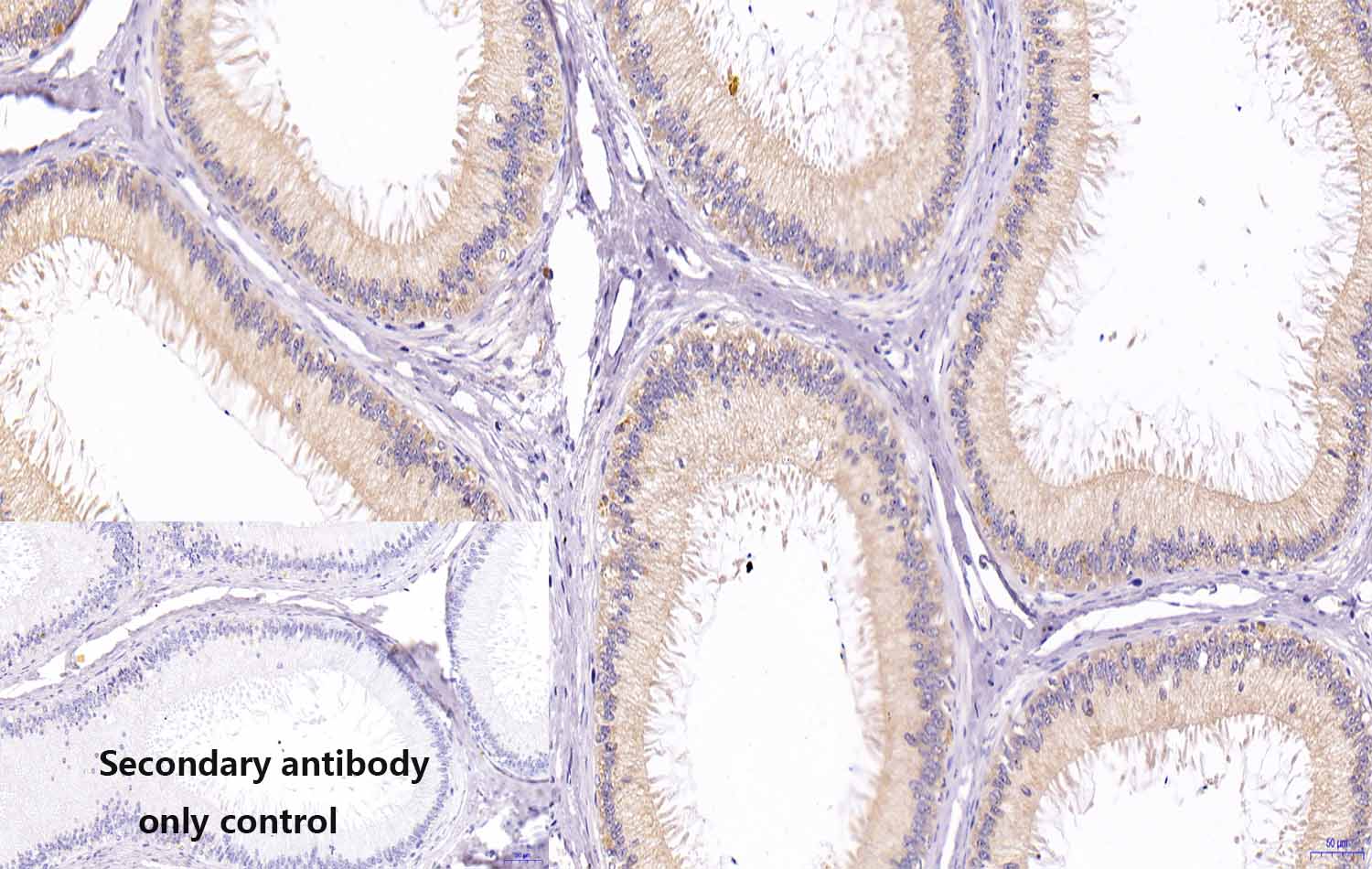
产品名称:Anti-CXCL8 Antibody, Mouse Monoclonal, E8T
克隆号:E8T
抗体亚型:/
经验证的应用:/
交叉反应:Predict reacts with: Human/Mouse/Rat
特异性:/
免疫原:A synthetic peptide of human CXCL8
制备方法:Produced in mouse immunized with CXCL8, and purified by antigen affinity chromatography.
来源:Monoclonal Mouse IgG
纯化:Immunogen affinity purified
缓冲液:Supplied in PBS, 50% glycerol and less than 0.02% sodium azide, PH7.4
偶联物:Unconjugated
浓度:Liquid
运输方式:This antibody is shipped as liquid solution at ambient temperature. Upon receipt, store it immediately at the temperature recommended.
储存条件:This antibody can be stored at 2℃-8℃ for one month without detectable loss of activity. Antibody products are stable for twelve months from date of receipt when stored at -20℃ to -80℃. Preservative-Free. Avoid repeated freeze-thaw cycles.
图片:
Figure1.Immunohistochemistry (Formalin/PFA-fixed paraffin-embedded sections) analysis of Monkey epididymis、Monkey submandibular gland sections labelling CXCL8 with purified MA00022HuM10-E8T at 30ug/ml dilution . Heat mediated antigen retrieval was performed using Heat mediated antigen retrieval using citrate buffer (PH6.0). Tissue was counterstained with Hematoxylin. Mouse specific IHC polymer detection kit HRP/DAB secondary antibody was used at 1:2000 dilution. PBS instead of the primary antibody was used as the negative control.
别称:CXCL8, AMCF-I, GCP1, K60, LECT, LUCT, LYNAP, MDNCF, MONAP, NAF, NAP1, SCYB8, TSG1, B-ENAP, Neutrophil-Activating Protein 1, Granulocyte Chemotactic Protein 1
背景信息:IL-8/CXCL8. Interleukin-8 (IL-8), also known as CXCL8, GCP-1, and NAP-1, is a widely expressed proinflammatory member of the CXC family of chemokines. Near its N-terminus, this 8-9 kDa chemokine contains an ELR motif which is important for its angiogenic properties (1). CXCL8 can associate into a homodimer or a heterodimer with CXCL4/PF4 (2), and it can also interact with matrix and cell surface glycosaminoglycans (3). Mature human CXCL8 shares 65%-69% amino acid (aa) sequence identiity with canine, feline, and porcine CXCL8 (4). There is no CXCL8 gene counterpart in rodent. N-terminal truncation by multiple proteases generates a range of shorter forms, and an alternative splice form of human CXCL8 carries an eleven aa substitution at the C-terminus (5). The bioactivity of CXCL8 is regulated by these truncations, by CXCL8 citrullination at Arg5 (N-terminal to the ELR motif) (6), and by the decoy receptor DARC (7). CXCL8 effects are mediated through CXCR1/IL-8 RA, which is also used by CXCL6, and through CXCR2/IL-8 RB, which is used by multiple CXC chemokines (1). CXCR1 and CXCR2 associate into functional homodimers and heterodimers with each other (8). Through both CXCR1 and CXCR2, CXCL8 promotes neutrophil adhesion to the vascular endothelium and migration to sites of inflammation (9). It triggers the antimicrobial activation of neutrophils through CXCR1 (10). CXCL8 also binds to Serpin A1/alpha-1 Antitrypsin, and this prevents CXCL8 interaction with CXCR1 (11). CXCL8 is upregulated in atherosclerotic lesions and other cardiac pathologies where it exacerbates inflammatory tissue damage (12). In addition, it induces VEGF expression, vascular endothelial cell proliferation, angiogenesis, and tumor cell invasiveness (13-16).
全称:Interleukin-8 (CXCL8)


